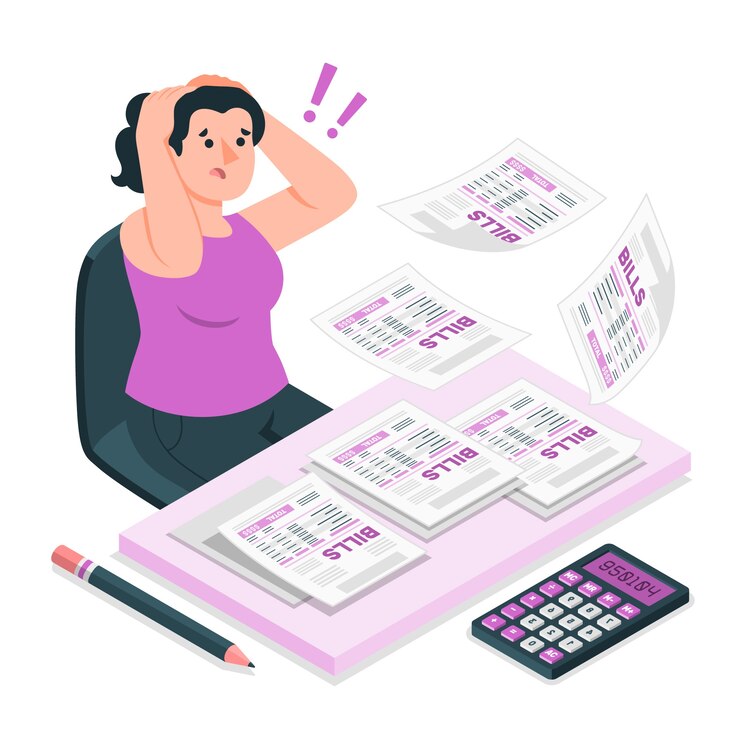Struggling with Bookkeeping? The Only Debit and Credit Cheat Sheet Your Small Business Needs
Struggling with Bookkeeping? The Only Debit and Credit Cheat Sheet Your Small Business Needs

It’s been two years since Lisa started a small tech startup. Things are smooth at her company. But it wasn’t always like this. We remember a time when Lisa was scrambling to organize her finances.
As a startup, she worked more on marketing but forgot to track debits and credits. She had no clue what her net income and gross margin was. And Lisa is not the only one. You’d be surprised how much we hear about this every day.
Many small businesses struggle with accounting. But today, we are going to save the day by providing a simple debit and credit cheat sheet. We have created this cheat to simplify bookkeeping and help small business owners like you and Lisa organize.
Why Do Small Businesses Struggle with Bookkeeping?
For many businesses, bookkeeping seems like the last episode of Breaking Bad. Somehow it catches you off guard. The problem is managing finances, and accounting takes time, and most business owners like Lisa are more focused on products or services.

Bookkeeping often becomes a thought when the tax season comes and you need to prepare your financial statements. Speaking of financial statements, if you want to know how you can save money from financial statements, check out our guide here.
According to a study by SCORE, 40% of small business owners say handling bookkeeping and taxes is the worst part of owning a business. So, why would you do bookkeeping, as it’s boring and doesn’t excite you?
Fortunately, there’s a simple fix: you can apply by creating a debit and credit cheat sheet.
What Exactly Are Debits and Credits?
In the bookkeeping world, debit and credit are the two key terms you need to understand. Think of these terms as two sides of a seesaw managing your overall finances.
Debit records what your business owns like an asset. A debit increases assets or expense accounts.
On the other hand, credit tells what your business owes or the money that comes in, like gross profits. Credit increases liabilities, revenue, and equity accounts.
Point to remember: Every debit needs a corresponding credit to balance the books.
For instance, let’s say you buy a $1000 laptop for your business. To record this, you’ll debit the asset account and credit the cash account with $1000.
So, you see, like chess, one move balances another.
What You Need to Know?
Debit and credit are broad terms, and it’s important to learn about them before we move on to the cheat sheet.
Fixed Asset
A fixed asset is long-term property or equipment a company uses for business operations, such as an office building or computers.
Gross Margin
Gross margin measures a company’s profit compared to revenue. A company has retained more capital if the gross margin is higher.
Net Income
Net income describes the company’s profits after all the expenses and taxes.
If all of this sounds like a trigonometric equation, don’t worry; once we put all these into the debit and credit cheat sheet and explain it with an example, everything will become clear.
Speaking of clarity, let’s get clear on the formula:
Assets = Liabilities + Equity
You might wonder why we have put this formula. Behind those terms are debits and credits. A debit increases assets.
The Only Debit and Credit Cheat Sheet You Need
With all these tricky terms out of the way, we finally came to the debit and credit cheat sheet. So, let’s start without any further delays.
| Type | Debit | Credit |
| Assets | Increase | Decrease |
| Liabilities | Decrease | Increase |
| Equity | Decrease | Increase |
| Revenue | Decrease | Increase |
| Expenses | Increase | Decrease |
| Withdrawals | Increase | Decrease |
Let’s put all this to work. Imagine yourself as a small consulting business owner (cool, huh?). We’ll walk you through how to record debit and credit for one month.
You start by investing $10,000 in your business.
| Type | Debit | Credit |
| Asset (cash) | $10,000 | |
| Equity (owner’s) | $10,000 |
You buy office supplies for $300.
| Type | Debit | Credit |
| Asset (cash) | $300 | |
| Expense (office supplies) | $300 |
You provide consulting services and receive $2000.
| Type | Debit | Credit |
| Asset (cash) | $2000 | |
| Revenue | $2000 |
You pay $1500 in salaries.
| Type | Debit | Credit |
| Expense | $1500 | |
| Asset (cash) | $1500 |
You buy office furniture for $1200 on credit.
| Type | Debit | Credit |
| Liability (accounts payable) | $1200 | |
| Asset (equipment) | $1200 |
Pay accounts payable.
| Type | Debit | Credit |
| Liability (accounts payable) | $1200 | |
| Asset (cash) | $1200 |
So, the end of the month would look like
| Type | Debit | Credit |
| Cash | $12000 | $3300 |
| Accounts Payable | $1200 | |
| Owner’s Equity | $10000 | |
| Office Supplies | $300 | |
| Salary Expense | $1500 | |
| Equipment | $1200 | |
| Revenue | $2000 |
Where;
- Cash balance: $12,000 (initial investment + revenue – expenses and payments)
- Equipment is an asset added to the business.
- Revenue earned from services provided.
- Expenses such as salaries and office supplies are deducted.
- Liabilities like accounts payable are noted.
Every entry you see is according to the accounting formula: Assets = Liabilities + Equity, and it stays balanced. This kind of record-keeping ensures accurate financial management and gives you a clear picture of net income and gross margin.
This sheet doesn’t involve rocket science, and you can see how easily we have tracked debits and credits. Follow this table, and your accounts will stay balanced.

This simple cheat sheet is just one piece of your business puzzle, and we know what running a business feels like. We help small businesses like yours avoid headaches by becoming your finance department. Imagine your company’s bookkeeping, tax preparation, and overall financial management getting done while you focus on what you do best, manage your business 😊
The good this is the process is super simple: Just tell us what you are looking for, and we’ll do the rest. It could be what your business needs. So, get in touch with us today, and we can tell you more about how we can help you.
Final Thoughts
Bookkeeping doesn‘t have to be a bad guy in your business. This debit and credit cheat sheet lets you look at numbers without getting overwhelmed.
And remember, when you need an expert service, Tangent Consulting is here to simplify your business and take the guesswork out of the equation. So, you can focus on what matters; your business.
FAQs
What is the easiest way to understand debits and credits?
Debit records incoming money, while credit records outgoing money. However, as we mentioned in our cheat sheet, they can appear differently on a balance sheet.
How to identify debit and credit?
In accounting journal entries, debits are recorded on the left side, while credits are noted on the right. The credit increases liability, equity, and revenue accounts while decreasing assets or expense accounts.
What are the golden rules of debit and credit?
In an accounting system, the gold rule means:
- Debit is what comes in, and credit is what goes out.
- Debit all expenses, losses, credit income, and gains.
- Debit is the receiver, while credit is the giver.

